Raccoon Mother With Cubs Nesting In A Toronto Tree
Bob and I had taken a drive down to Queen Street East here in Toronto to check out the Cliff Swallows nesting at the Harris Water Treatment Plant. On the way home, we decided to make a quick stop at a shoreline City Park where we caught up with some Baltimore Orioles and a number of Bank Swallows, but not much else was happening there that afternoon. Then, another birdwatcher took us “under her wing” and escorted us to a tree where a family of Raccoons (Procyon lotor) was known to be nesting.
At first, the lady directed my attention to a large Raccoon that she identified as a male. It was prowling about on the hunt for some food. I considered this pretty unremarkable as Raccoons are such a common sight, but then she made me aware of a large tree nearby where a good-sized cavity stood gaping. I thought, what a great place for a nest. Up to that point, neither Bob nor I had any knowledge of Raccoons nesting at the Park.
The next thing you know, there was some disturbance in that huge yawning hollow just before mama Raccoon and some of her cubs poked their noses out to see what all the fuss was about. The smile on my face was from ear to ear. The lady simply said, “you’re welcome.”
We didn’t dare get too close to the tree because the mother would become downright vicious if we made her feel threatened in any way, but the cubs were curious and restless. We could see them moving about, tumbling over one another and vying for mother Raccoon’s attention.
We had no way of knowing how old the cubs were, but mother Raccoon has been feeding them well. In this photo, we can see one of her teats available and ready for the next cub to latch on. Female Raccoons will suckle their young until they are about 16 weeks old. The kits, as they are sometimes called, remain in the nest cavity for the first two months of their lives. As we observed the young Raccoons, we could discern 4 small faces peering out at us in addition to the mother.
Raccoons have a mischievous and endearing countenance owing to the black facial mask that encircles their eyes. This area of black fur contrasts sharply with the surrounding white fur giving a Raccoon the appearance of a masked bandit. This is what people remember first when they think of this furry scavenger. A Raccoon’s slightly rounded ears are also bordered by white fur.
When we and other photographers retreated from the proximity of the nest tree, the mother Raccoon felt confident enough to escape the confines of the den. Perhaps she needed a break from her four babies. Draped over the curvature of a small limb, her sheer size gave some indication as to the dimensions of the nest cavity; it must be quite spacious. Raccoons vary in size substantially depending on their habitat, and they can range from 2 to 14 kilograms (4 to 30 lb), but most Raccoons would be somewhere between 3.5 and 9 kilograms (8 and 20 lb).
It is here in our northern latitudes that Raccoons tend to be the largest, whereas in the southern parts of their range, like in Florida, U.S.A., they are much smaller. Helping them survive our cold winter weather is the dense underfur that makes up most of a Raccoon’s heavy gray coat. It provides excellent insulation.
Mother Raccoon must have been somewhat uncomfortable because, before we knew it, she began to scale the tree trunk. She managed that task with great adeptness owing to her dexterous front paws, sharp claws and long fingers. As this Raccoon scampered up the tree, we had a good view of its big, bushy tail that is banded with between 5 and 10 alternating black and brown rings of fur.
Once the mother Raccoon was well removed from the nest cavity, it was possible to approach it for a look inside. The four kits had curled into one another and appeared to be preparing for a nap.
The mother Raccoon took up a position high in the tree from where she could keep an eye on the opening to her den. Because Raccoons are highly adaptable, these mammals are found across a wide variety of habitats…forests, prairies, marshes and urban landscapes. Originally, they were found primarily in deciduous and mixed forests because they resort to climbing vertical structures when feeling threatened.
The English name Raccoon can be traced back to the Algonquian word arahkun, the root of which, ahrahkunem, means “he who rubs, scrubs and scratches with his hands.” It is the Raccoons’ skill with their paws and fingers that make it possible for them to find and feast on just about anything. Raccoons, in their natural habitat, are often seen near the shoreline of a river, pond or lake where they dabble for underwater sources of food such as clams and crayfish. Once found, a Raccoon will often pick up the creature with their tactile front paws, inspect it, and then rub the item to remove undesired parts. This exercise suggests that a Raccoon is washing its food.
As Bob and I chatted quietly at the base of the trunk, mother Raccoon took her ease in the much more accommodating and lofty crotch of the tree. She seemed in no hurry to descend. When climbing down a tree, a Raccoon goes headfirst which is not usual for a mammal of its size. This is made possible because Raccoons are capable of rotating their hind feet so that they actually point backwards so they can grip with their claws to prevent falling.
The sleepy little cubs cared less that we were sneaking peaks in at them, so we wondered how good their eyesight was at this tender age. At birth, they are both blind and deaf, but their masks are already distinguishable against their pale fur. Raccoons usually mate between late January and mid-March when triggered by increased daylight, and somewhere between 54 to 70 days later, the litter of 2 to 5 kits is born.
By the time the cubs are between 6 and 9 weeks old, they will weigh about 1 kilogram (2 lb). The young will then be ready to make their way out of the tree cavity and begin consuming solid food. At that time, the mother Raccoon will relocate her offspring to the ground so the cubs can explore on their own. Judging by the size of these cubs, they will be moving outside the den soon. It is getting slightly cramped in there, but they sure seemed content in the close quarters.
Frame To Frame – Bob and Jean

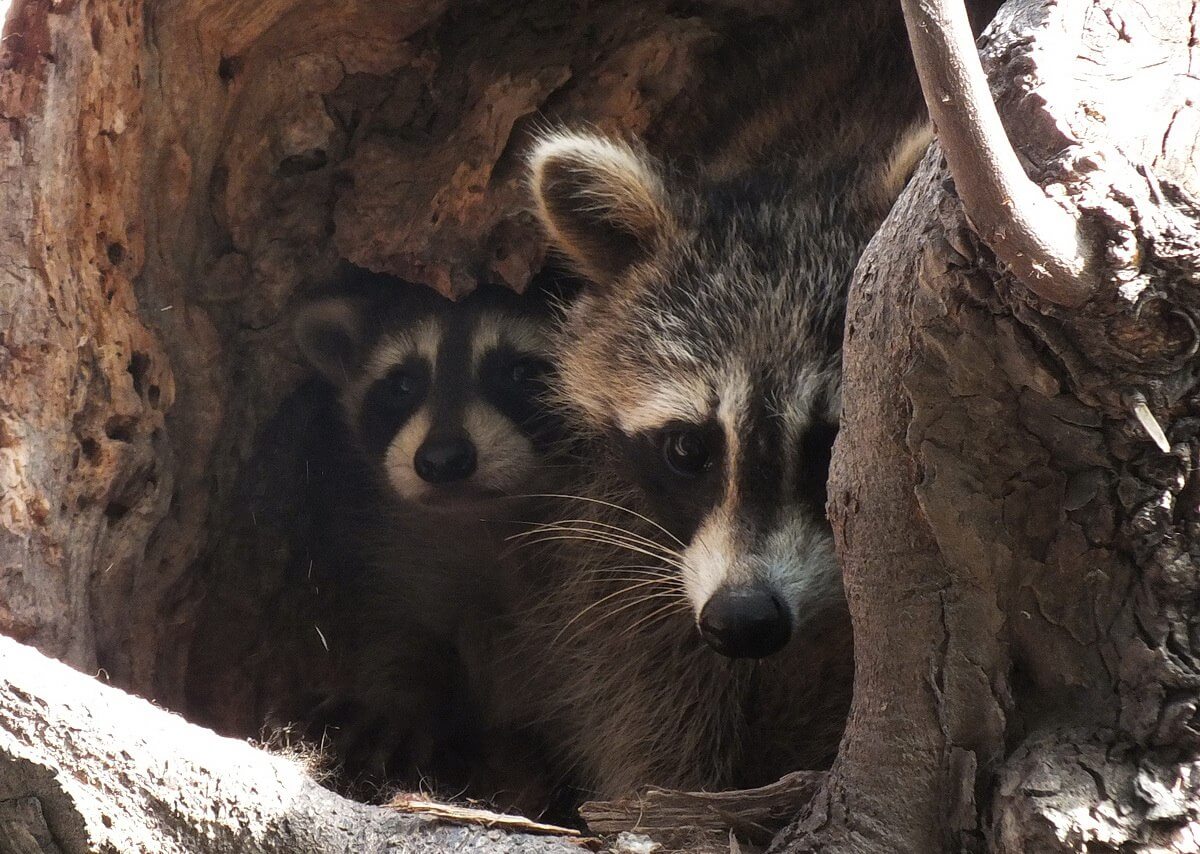
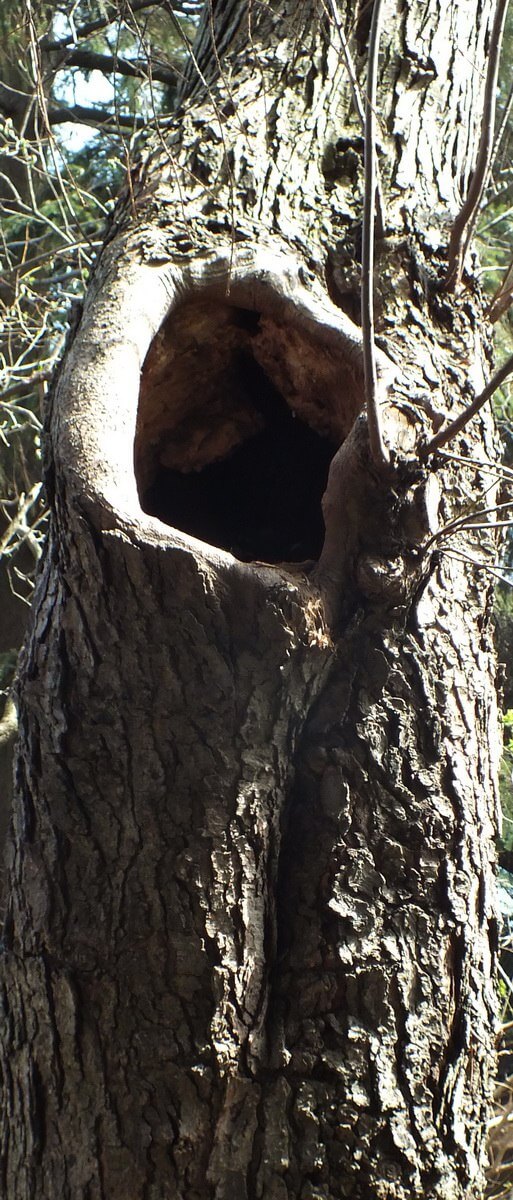
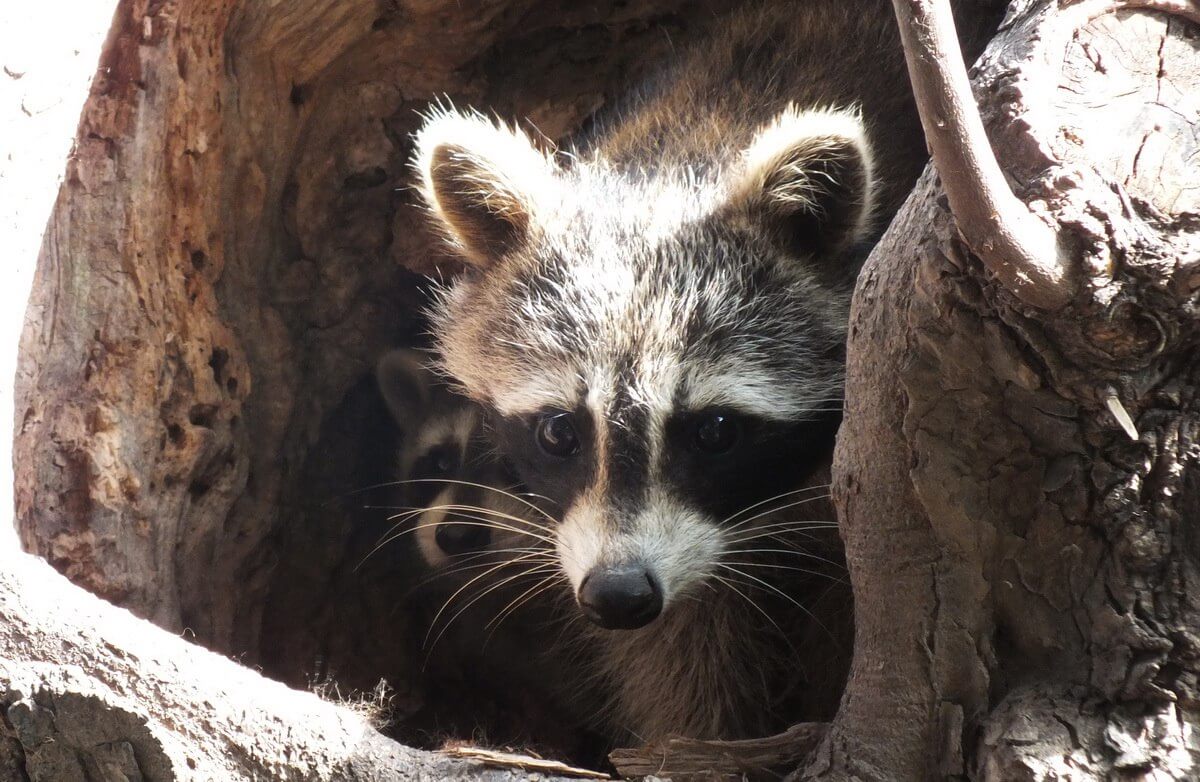
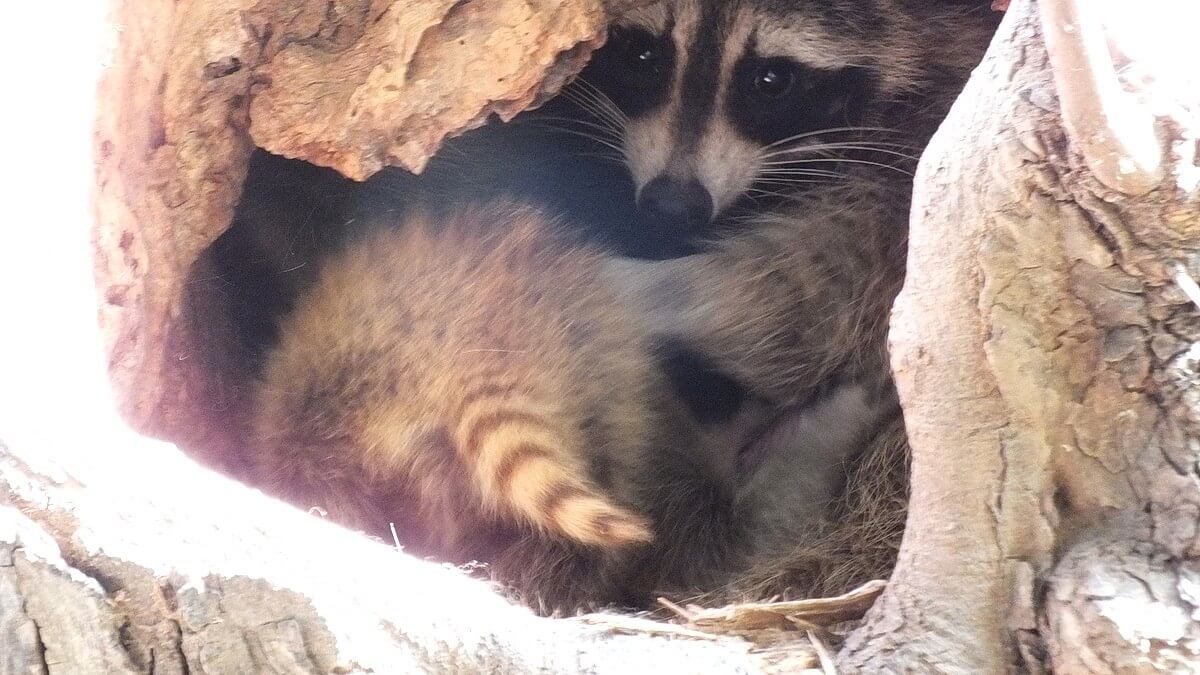
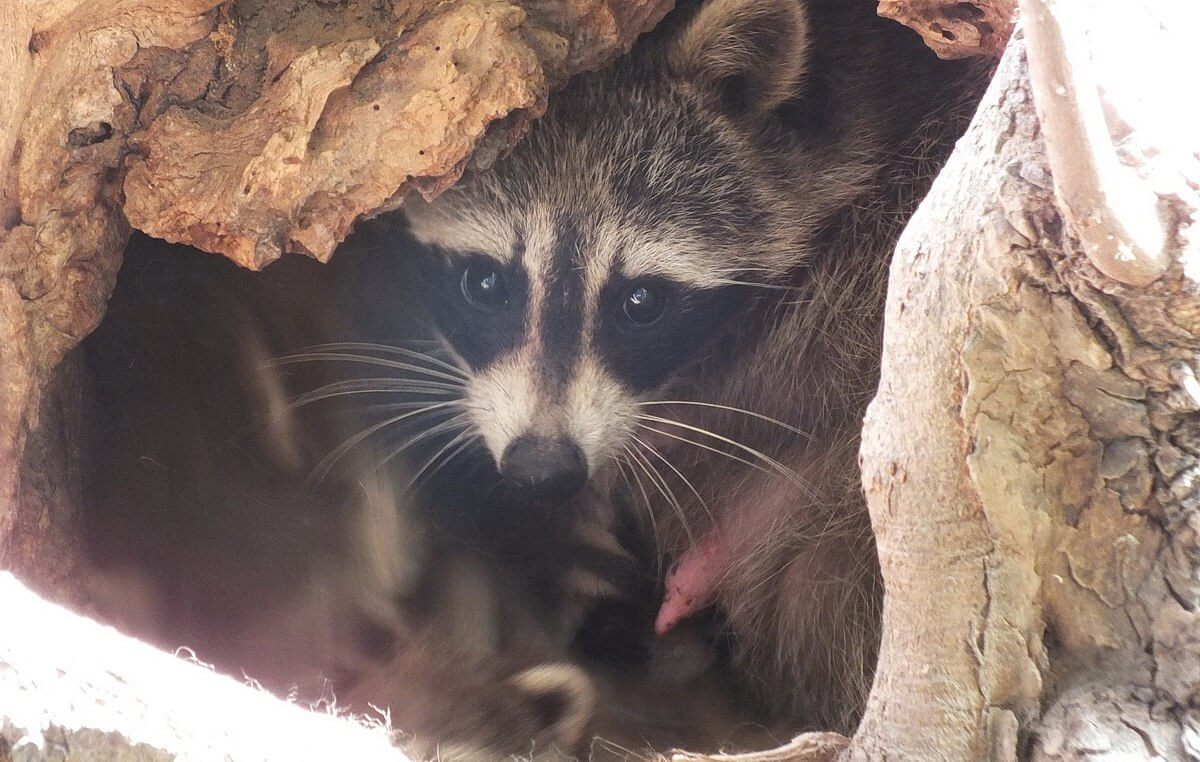
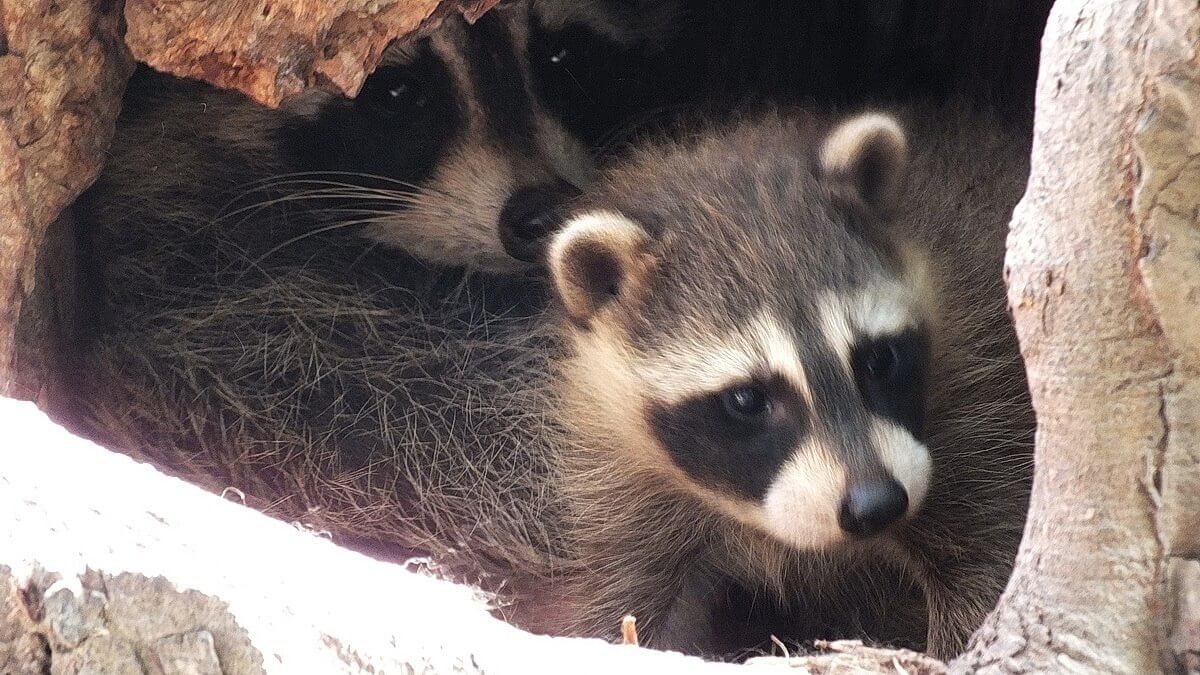
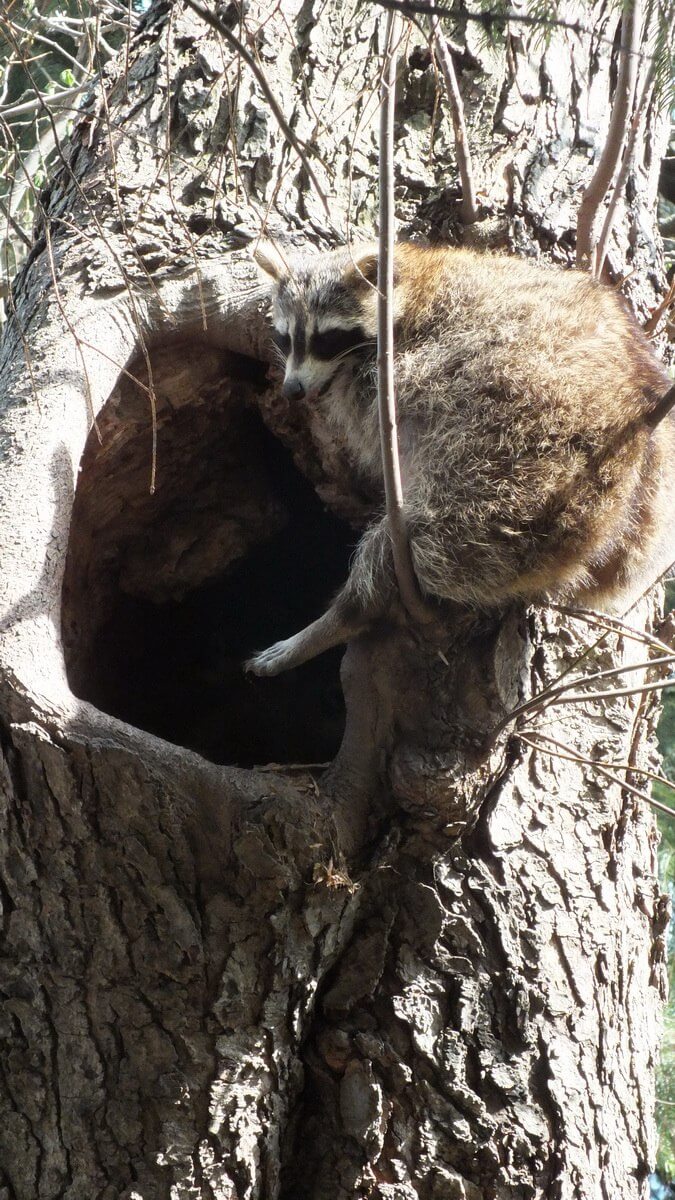

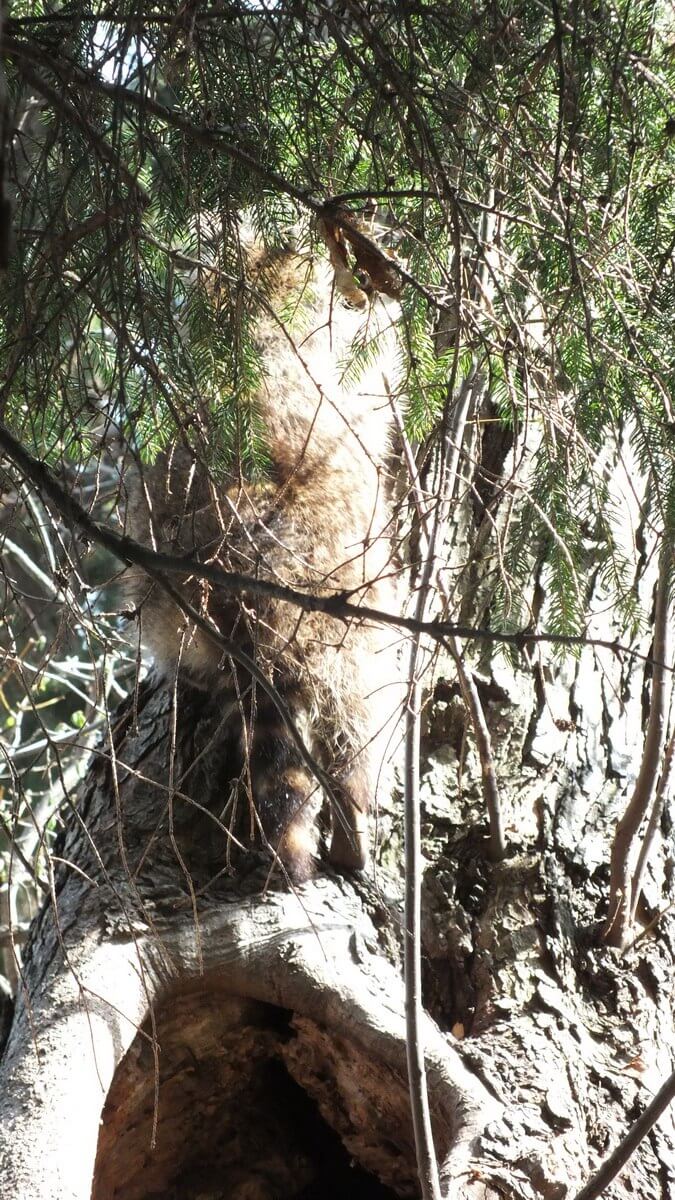

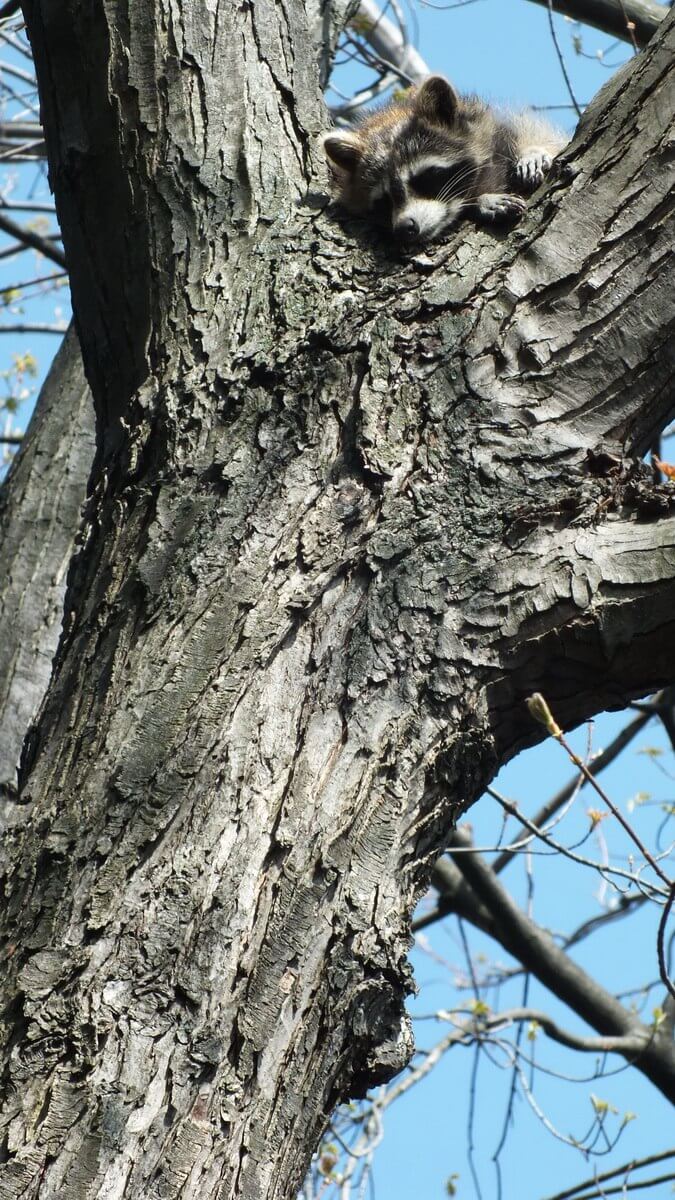
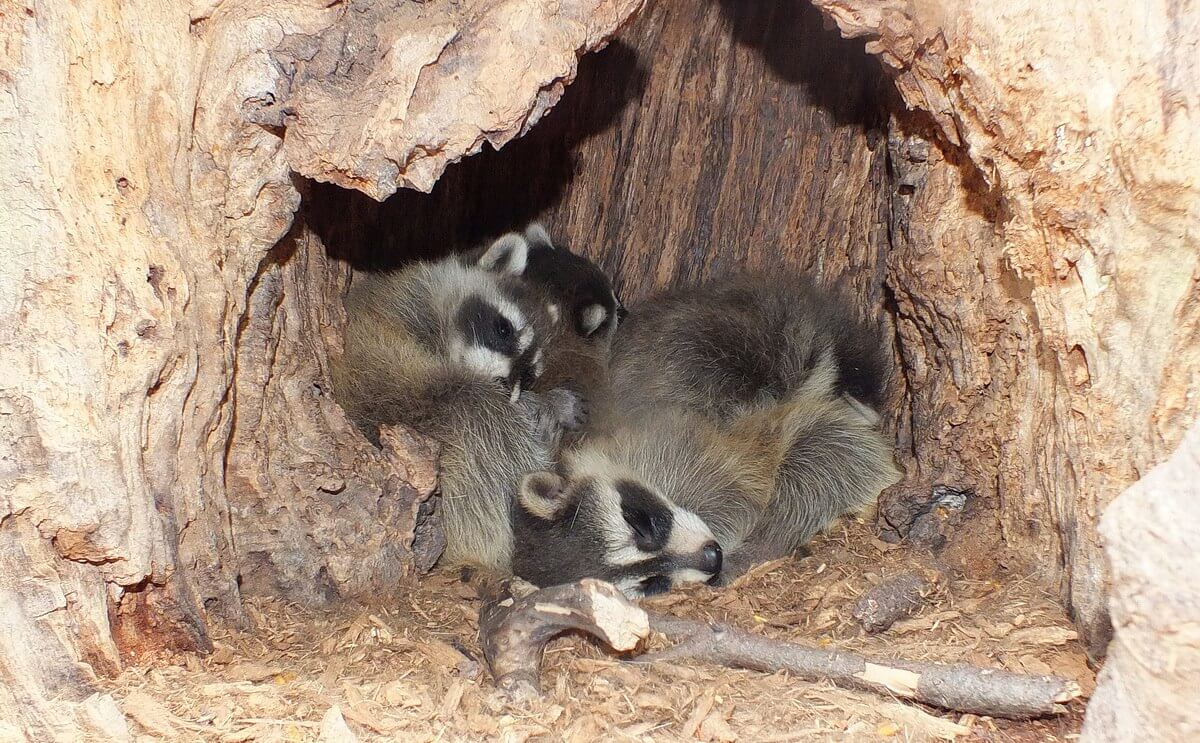


Amazing sighting! Wow 🙂
It was really nice to see the raccoons in their natural habitat instead of rambling around my backyard. The young ones were so cute and innocent looking.
The first picture is really great!
Thanks, Blake. They really were adorable at such a young age.